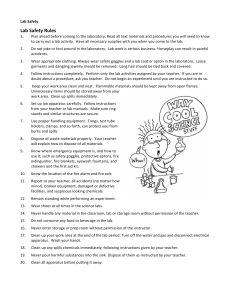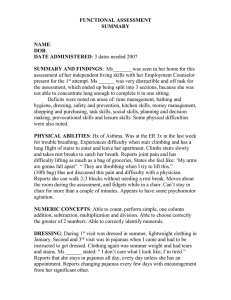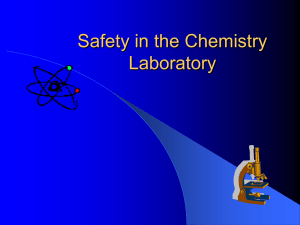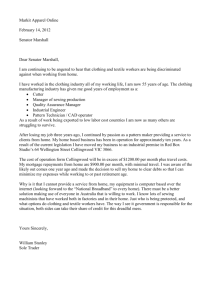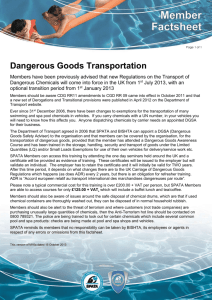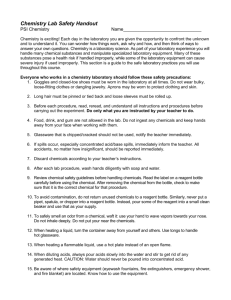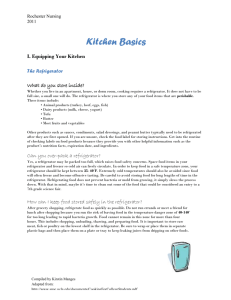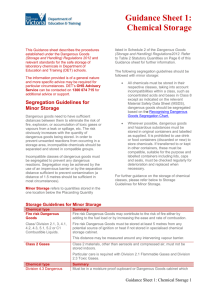FIRST AID IN THE KITCHEN
advertisement
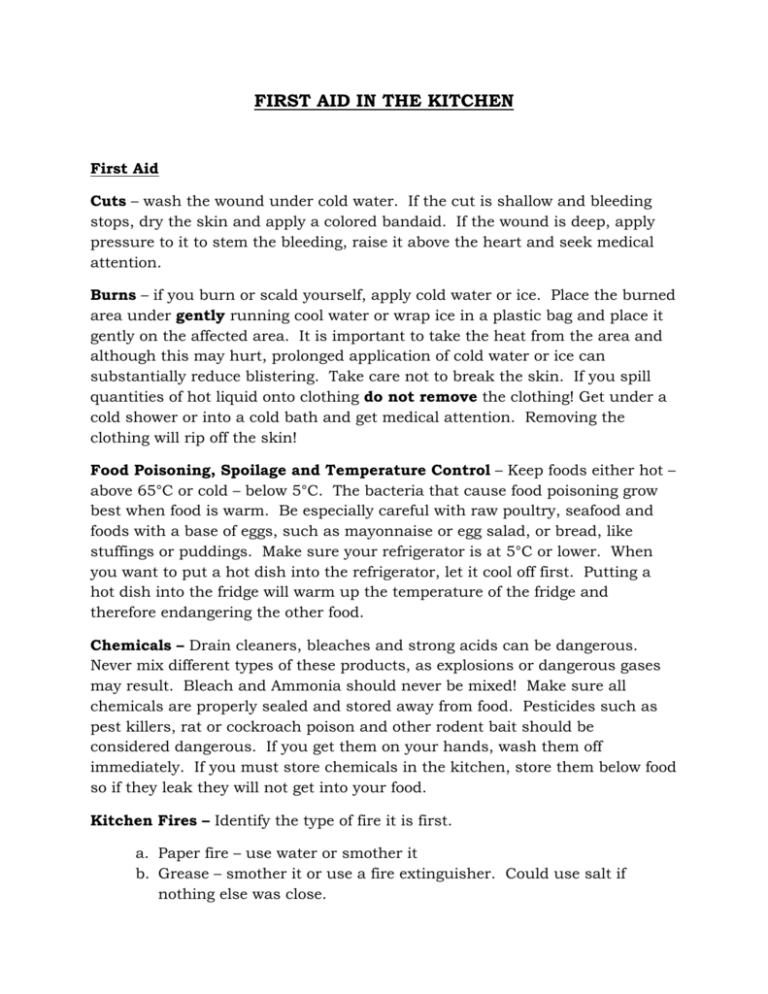
FIRST AID IN THE KITCHEN First Aid Cuts – wash the wound under cold water. If the cut is shallow and bleeding stops, dry the skin and apply a colored bandaid. If the wound is deep, apply pressure to it to stem the bleeding, raise it above the heart and seek medical attention. Burns – if you burn or scald yourself, apply cold water or ice. Place the burned area under gently running cool water or wrap ice in a plastic bag and place it gently on the affected area. It is important to take the heat from the area and although this may hurt, prolonged application of cold water or ice can substantially reduce blistering. Take care not to break the skin. If you spill quantities of hot liquid onto clothing do not remove the clothing! Get under a cold shower or into a cold bath and get medical attention. Removing the clothing will rip off the skin! Food Poisoning, Spoilage and Temperature Control – Keep foods either hot – above 65°C or cold – below 5°C. The bacteria that cause food poisoning grow best when food is warm. Be especially careful with raw poultry, seafood and foods with a base of eggs, such as mayonnaise or egg salad, or bread, like stuffings or puddings. Make sure your refrigerator is at 5°C or lower. When you want to put a hot dish into the refrigerator, let it cool off first. Putting a hot dish into the fridge will warm up the temperature of the fridge and therefore endangering the other food. Chemicals – Drain cleaners, bleaches and strong acids can be dangerous. Never mix different types of these products, as explosions or dangerous gases may result. Bleach and Ammonia should never be mixed! Make sure all chemicals are properly sealed and stored away from food. Pesticides such as pest killers, rat or cockroach poison and other rodent bait should be considered dangerous. If you get them on your hands, wash them off immediately. If you must store chemicals in the kitchen, store them below food so if they leak they will not get into your food. Kitchen Fires – Identify the type of fire it is first. a. Paper fire – use water or smother it b. Grease – smother it or use a fire extinguisher. Could use salt if nothing else was close. c. Electrical – fire extinguisher d. Clothing – do not let the person run. Force the person to the floor and roll them to help smother the flames. Do not hit at the flames with a towel as this will only feed the fire. Fire Alarm – Turn off all stoves and elements and remove food from stove top. Unplug electrical equipment. Leave the room and head down the nearest stairwell and out onto the field. Please stay together as a class and remain quiet.
